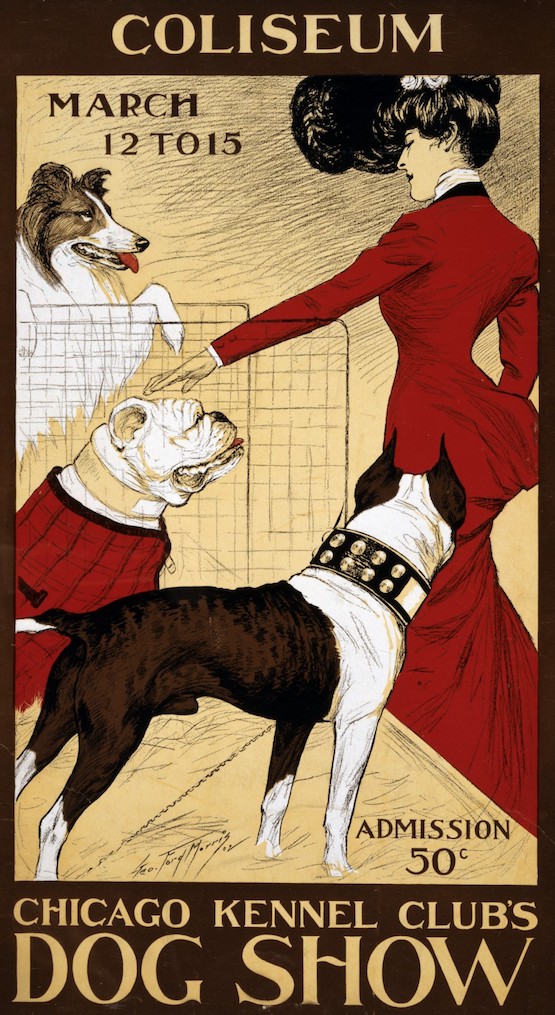
For long time, the first “dog show” was considered to be the 1859 exhibition in Newcastle-upon-Tyne at the Town Hall. Including dogs was more of an afterthought because the “main event” was actually an annual poultry and cattle show. Breed entry was limited to setters and pointers, their owners hoping to snag a pair of double-barreled shotguns made and donated to the winner of each section by one of the show’s principal promoters, a Newcastle gunsmith named Mr. W.R. Pape. Five judges officiated, and they included the famous “Stonehenge,” aka John Henry Walsh, editor of The Field magazine.
It may have been the first instance of a modern dog show, but many cynologists think the first dog show may actually have been the one held in Tervueren, Belgium in 1847. Only one breed was exhibited, the English Pointer, and three judges evaluated 60 exhibits.
Australia’s first dog show took place in Hobart, Tasmania in 1862. The exhibition brought in 91 dogs of at least 17 breeds, including an “Esquimax Poodle.” The next dog show (and the first one held on the mainland) was run by the “Acclimatisation Society” to encourage improvement in the breeds of dogs. It was held in Melbourne in 1864.
The first dog show ever held in the United States occurred in Chicago on June 4, 1874. The show hosted by the Illinois State Sportsman Association was for Setters and Pointers only and twenty-one dogs were exhibited. A full accounting of the show was reported in the original Field and Stream magazine (remember, now, the AKC didn’t exist, and wouldn’t for another ten years), so there was no show catalog or even rules. Proud dog men and women abided by conduct of good sportsmanship.
These shows, however, are “recent history.” In the 1600’s, Schipperke Speciality Shows were held by the Guild of Brussels by aristocrats and the upperclass. These shows attracted visitors from miles around, and Schipperkes were often shown wearing decorative collars of brass. Status-conscious noblemen showed off their station in life by walking around the public square with their Schipperke in tow.
